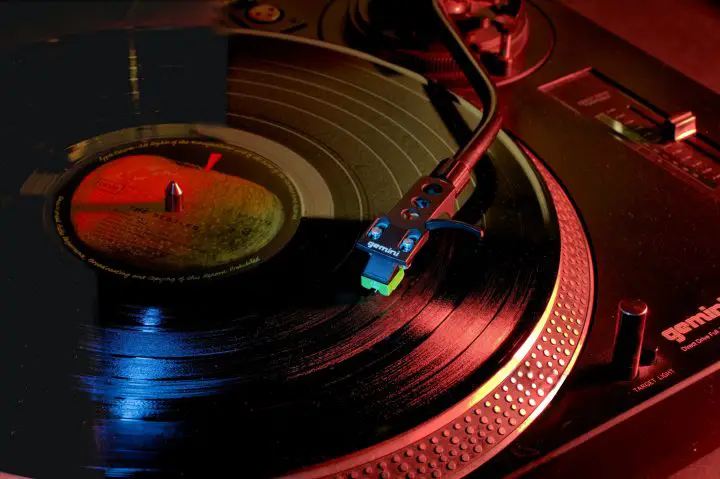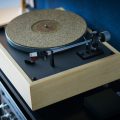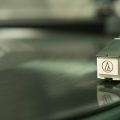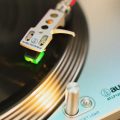Are you looking to get your very first record player but don’t know where to start? How do you even go about buying record players when the market is so saturated?
Well, we are here to help guide you and show you 5 key things you should be thinking about along the way.
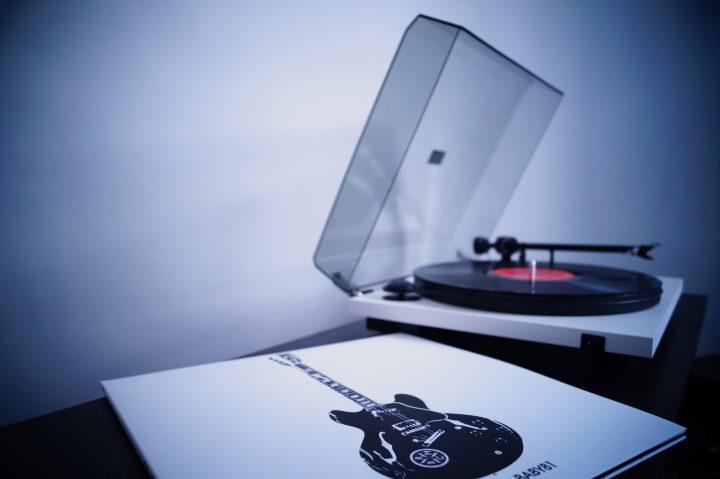
Table of Contents
- 1. Ask Yourself
- 2. Prices when Buying Record Players
- 3. Drives
- 4. Operation
- 5. Digital Days
- Final Tones
- FAQs Buying Record Players
1. Ask Yourself
The first thing you are going to want to do is to ask yourself a few preliminary questions so you can ascertain what precisely you are after in your own record player. The sheer amount of choice on the market today can be incredibly overwhelming, so you would be best advised to find out the kind of thing you want out of a record player so that you can play your vinyl records properly.
- What kind of budget are you working with?
- Do you care all that much about extra features like Bluetooth or USB functionality, or are you purely in it for audiophilia?
- What kind of style are you going for?
Most people will have answered at least one of these questions differently from the next person, and that’s the point. You should all have at least somewhat differing opinions, so by asking yourself these crucial questions, you can begin to get to know your own tastes a little better and get your record collection up and running and define what type of a record collector you are.
At first, it would be good to work out what kind of budget you are working with, lest you get too excited about the prospect of owning, say, an Audio-Technica AT-LP120, before realizing that you can’t afford it. There are still plenty of other alternative options to choose from that you might consider if you can’t otherwise afford the record player that you really want.
2. Prices when Buying Record Players
So, while you are determining your exact budget, it might be worth investigating some of the features of each of the various price ranges on the audiophile market today.
Around $100
Here at the bottom of the spectrum, you can’t really begin to expect much in the way of quality. Sure, such a range of record players will offer the basic functions of a record player, but you don’t need the owner of your local record store to tell you that this will be an inadequate piece of kit in the long term.
The usual suspects in this price range are usually either manufactured by Crosley or Victrola, offering new users looking to build up a vinyl collection a quick and affordable option through which to get started. While this route might seem like a good idea in the long term, it is worth considering the fact that these record players are not likely to last long, nor sound very good for very long either.
Sure, one record might sound good on it, but the record sits and takes a beating every time it is beneath the stylus of a Crosley (pictured below) or Victrola, especially if you haven’t swapped out the factory-installed needle.
Here are a couple of helpful articles for ideas on models of turntables around the price of $100:
Top 6: Best Record Players Under $100
Top 8: Best Record Player Under $200
Around $200 – $400
Here is where anyone in any way serious about the sound of their records should even begin to think about setting their sights. Indeed, if you are a beginner looking to grab a record player that is both affordable and capable of translating your discs into the real world at a decent quality, then you would be loath to neglect this price range, which audiophiles might refer to as mid-range turntables.
A turntable setup in this range is usually pretty well-made, offering professional playback and some extra features by a wide variety of different brands. For example, you can scarcely go wrong with the Audio-Technica AT-LP60 (below), a household name in the world of affordable turntables that are still able to get the job done.
Here is my list of 5 Best Turntables Under $300
$500 and Up
Here is where things start to get pretty serious, so those in any way committed to their journey through audiophilia ought to seriously consider a turntable in this category. At such prices, you can expect higher-end models of turntables that operate with exceptional accuracy and exhibit an admirable build quality.
Though they have now branched out into the more affordable turntable market, Pro-Ject has always been a great way to tell whether you are taking a step in the right direction. The Pro-Ject Debut Carbon (below) is around $500 and should be a good guide to the level of quality you should expect from turntables of this ilk.
Given the expense of such record players, you really should give them a go before you buy. Either visit a specific hi-fi retailer or purchase from a place that has a flexible returns policy so that you can get a good idea of how the turntable will sound in your own setup. If, though, you do decide to invest in a record player of this ilk, you will likely never need to replace it.
3. Drives
There are two different types of drives within the chassis of every turntable. Some will be belt-driven turntables and more will be powered by a direct drive.
Belt Drive
A belt drive turntable is quite literally a turntable that is powered or made to run with a belt. This belt (below) is attached to the motor which then moves the turntable platter against the stylus. This is clearly one of the most important parts of a turntable, as the improper flow could spell disaster for the sanctity of a disc.
Because of the rubber material from which these belts are typically constructed, many external vibrations can be easily absorbed before they have an effect on the overall sound. Thus, a belt drive turntable is going to be at least a little quieter than a direct drive turntable.
This belt is, however, perhaps a little more susceptible to wear and tear than the motor in a direct drive. It is, after all, just a rubber belt that goes around and around – eventually it will wear down to nothing.
Direct Drive
Direct drive turntables, on the other hand, instead of having a rubber mediator between the motor and the turntable platter, seek to cut out this middleman, connecting the motor directly to the platter. This direct connection means that a direct-drive turntable can start and stop almost immediately whereas a belt-drive turntable would have to slow down and come to a halt like a vehicle in motion.
For this reason, direct-drive turntables are often called upon by DJs, as the platter can be more easily manipulated to your own whims. The spin and torque of the platter are said to be more accurate at following the flow and speed of a record, hence why turntables like the Pioneer DLX100 (pictured below) which are specifically designed for DJs have been fitted with a direct drive system.
Obviously, you won’t need to worry about replacing the belt of a direct-drive turntable as they don’t have one, but they are also known to accrue dirt and dust in their various crevices, causing them to malfunction and give up the ghost all of a sudden.
Likewise, they are also prone to undesirable noises and vibrations – though this might just be the thing you need to get your DIY experimental and noise music set off the ground.
4. Operation
This aspect refers to the action of the tonearm in relation to the mechanisms of the turntable. There are three such types of operation:
- Manual record players (such as the Fluance RT81 below) require the user to place the stylus onto the record and remove it once the record is finished. Contrary to what you might think, this is a trend found in every price range, especially since there is a misguided belief that automatic mechanisms in a record player can have a detrimental effect on sound quality.
- Automatic record players (such as the Sony PS-LX310BT pictured below) are those where the operation of the tonearm is fully automatic, meaning that you can place and remove the stylus from the surface of the record with the click of a button.
- Semi-automatic record players (like the Denon DP-400 pictured below) attempt to strike a balance between the two polar positions above. Some semi-automatic record players will enable you to place the stylus onto the record at the click of a button but will require you to manually remove the stylus. On the other hand, others will require you to manually place the stylus onto the record but will automatically remove it from the record when it has ceased playback.
Finding the right one for you can be a little tricky, especially if you are not quite sure what you want. At the end of the day, each is going to be part of a decent turntable.
If you want the authentic vinyl experience, use a manual turntable. If you are looking for a more convenient experience, try an automatic. Want somewhere between the two? Then the semi-automatic is the way to go, though they do tend to be more expensive than either of the others.
5. Digital Days
Nowadays, turntables are not just turntables. Rather, they can also contain digital parts and functionalities, so it is worth ascertaining whether these kinds of additional features are the kind of thing you are after or whether they are surplus to requirements.
Though there are a whole host of different features available today, the two main ones pertain to USB and Bluetooth functionalities.
USB
Some turntables nowadays can offer USB functionality which enables them to send the audio signals that they are receiving directly into a computer via the USB port. This is great if you are looking to convert your vinyls to CD to make some space in your living environment.
This kind of functionality is increasingly available even on really cheap turntables like the ION Audio Max LP (pictured below). Even if the quality isn’t all that great, vinyl is inherently decaying as a physical medium, so you need to keep them archived somehow.
Bluetooth
Another of the main additional extras you can find on many modern turntables is Bluetooth functionality. For many millennial collectors that are otherwise new to the idea of listening to vinyl, having a music player that can’t connect via Bluetooth is simply unthinkable.
Thus, many modern manufacturers have created turntables to compete with each other and to show their millennial audience that they are the most modern and up-to-date. Even companies like Victrola are producing models (like the one pictured below) to compete in this trend, providing a record player that can not only project its audio out to external Bluetooth speakers but also allow external devices to connect to the built-in speakers via Bluetooth.
Final Tones
So, there you have it! Hopefully, you are now feeling ready and able to find the record player that is right for you!
FAQs Buying Record Players
What to look out for when buying a vinyl player?
There are a number of things to consider when you are looking to invest in your own vinyl player, not least the kind of budget you will be working with and the kind of thing you are looking for in a record player. Ascertaining these will fast-track you along on your journey to buying a record player. Other things to look out for include the type of motor system in the chassis (either belt drive or a direct drive), the types of additional extras that might be featured, or the lack thereof (including USB and Bluetooth functionality), the functioning of the tonearm (either manual, automatic, or semi-automatic), etc.
Is it worth it to buy a vinyl record player?
Whether or not buying a vinyl record player will be worth it for you will be entirely based on your own preferences and financial situation. If you don’t have all that much money and aren’t all that interested in music, then buying a vinyl record player and starting a record collection seems like a bit of a nullifying venture. If, though, you are passionate about music and have enough money to spare, then chances are you will be able to get the most out of buying a vinyl record player and starting your very own record collection.
How much should a vinyl player cost?
This will very much depend on your own budget and the kind of sound you want from your record playback. There are vinyl players for just about every price range you can conceive of, starting from $50 and going up endlessly the older and more specialized you get. Though record players that are around $100 or less tend to equate to a steaming pile of cow dung, those within the range of $200 to $400 are more than capable of getting the job done and will no doubt serve you well in your own audiophilia adventures.
What is the point of buying a record player?
Buying a record player is usually done with the express purpose of listening to records, hence the name. If, though, this question is asking more about the reason for the resurgence of this – let’s face it – old and outdated format, then the answer is anyone’s guess. There does seem to be a tendency in all forms of popular culture to resort to older forms and formats in an effort of escapism – this could also just be for other reasons.





